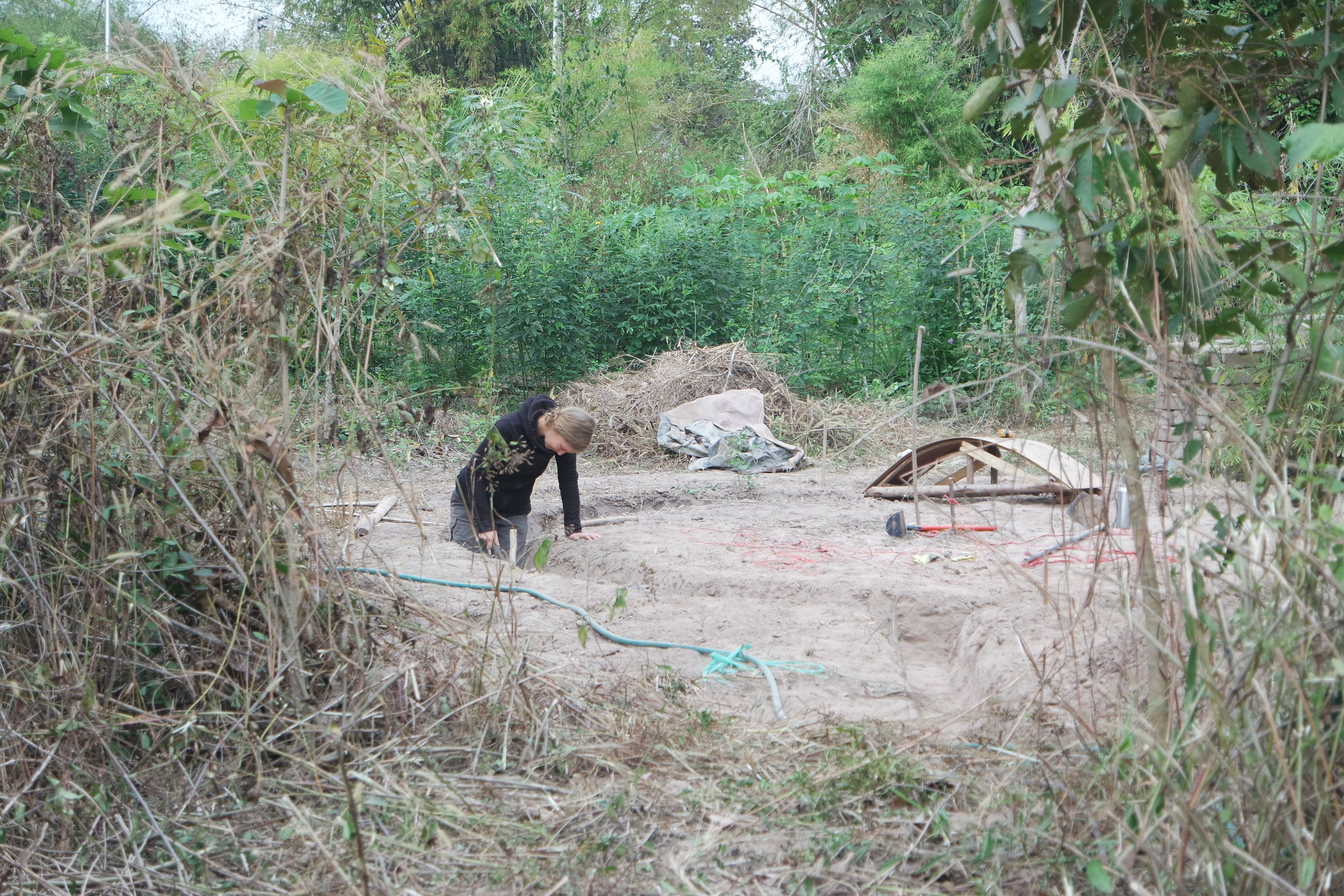WEARING GOOD BOOTS: building a foundation
A natural roundhouse at Gaia Ashram
Foundation work for natural building
After living in cities and apartments all my life, I moved from urban Hanoi to a community in a rural area in the northeast of Thailand. One of the first things we wanted to figure out is how to build a house while winning back the power of creating things with our own hands. But before we are able to touch the mud and move bricks we had to go through important steps of building the foundation.
Author: Lars Blume
Shaping the dirt and getting a better understanding of the soil conditions around.
With pouring the first layer of cement things are getting serious.
We are building our very first house out of natural materials.
The people of Gaia Ashram, the community we live in (read the blog post about why we moved there HERE), are giving us the opportunity to design and build our own house; which feels like the community is placing a lot of trust in us. At the same time we are glad to receive a lot of support and to benefit from existing knowledge and expertise. This helps us a lot to grow enough self-confidence and learn the needed skills. We feel very grateful for this opportunity! Well, and the best thing about natural building is that if you did something wrong you can knock everything down, soak your mix of clay, sand and fibre in water and start all over again. However, this magical way is only partly true for the foundation work, the first tangible step of any building project. .
Before starting to work on the natural building we redesigned the structure to make sure the building fits into the environment.
We had to cut down some grasses and plants to get a better overview and access to the construction site.
Why do you actually need a foundation?
One thing we learned at the very beginning is that a house needs strong boots and a good head. But why? A foundation has many functions. When looking at our building project, we are mainly talking about spreading the load, holding the building together as one unit, raising the walls off the ground and keeping the walls away from water. In addition, the nonexistence of pesticides, herbicides or other chemicals makes Gaia Ashram a paradise for all beings. And while all creatures are more than welcome to live on the land and break down organic material, they can be a threat when building with natural material. Especially to prevent termites it is highly recommended to secure your structures to make them last longer. Based on the experiences and lessons learned of Gaia Ashram and other natural building projects in Thailand, we realized that a natural building project under those conditions usually starts with using mainstream portland cement.
The waiting bricks keep us motivated to go through the hard times of the foundation work.
Cement is one of the largest emission sources of CO2 - Negative impacts of cement
Cement is an important construction ingredient around the world, and as a result, cement production is a significant source of global carbon dioxide (CO2 ) emissions, partly due to the significant reliance on coal and petroleum production. Furthermore, cement production also is a source of process-related emissions that is resulting from the release of CO2 during the calcination of limestone. Cement is produced in large, capital-intensive production plants. Generally, these plants are located near limestone quarries or other raw carbonate mineral sources as these sources are the main raw materials that are used in the cement production process. Thus, it is definitely not a low technology or local available and accessible resource (if this is of interest to you, check this background paper for more facts).
But this is not the only downside: here at Gaia Ashram, we want to generate rich and fertile soil, create habitat and be a balancing element in a world where more and more surface area is covered with concrete or tar. We want to reduce the use of external materials and go for local resources instead. All this doesn’t apply for concrete. Even more: to make concrete you need construction sand which is becoming a scarce resource. Also, concrete is a by-product of the coal industry and for me, working on slowing down the coal expansion in Southeast Asia, it feels totally wrong to support parts of that destructive industry.
Cement is a by-product of coal generation. (Photo: GreenID)
How can slowing down the coal expansion go together with using concrete? (Photo: GreenID)
Hard decision and no way out?
We were working a lot on this topic. We’ve talked to natural builders, visited other projects and most importantly, we understood the fear of the Gaia Ashram community: this time, there is no alternative. Thus, we focused on reducing the amount of new concrete to a minimum. This approach is pretty much in line with the principles of Gaia Ashram and the people supporting us. We reclaimed rubble, concrete chunks and wall elements from roadsides that were dumped by people getting rid of their knocked down houses without seeing the resource potential of each part. We are approaching this issue from a different angle and luckily we were able to put some labour and time into the process of reclaiming. In the end, it actually was an active and joyful joint act of environmental protection with a double benefit: solving a trash issue and bringing unused potential back into circular use.
With the power of community we were cleaning roadside dump and gained building material.
Filling the the trenches with reclaimed material helped to reduce the amount of new cement.
The 7 steps of our foundation
It took us a while from the first digging to the finish of the foundation as we had to figure out some design issues on the way. Anyway, we’ve had to work through 7 steps to build up a solid and hopefully termite-proof foundation and start the actual natural building project.
1. Digging a 25cm deep trench
2. Leveling and filling the trench with reclaimed chunks and rubble
3. Pouring concrete up to ground level
4. Placing steel reinforcement to connect the different parts to one solid foundation
5. Raising the foundation 20-30cm above ground level with reclaimed concrete bricks
6. Filling those bricks with reclaimed material and pouring concrete to fill it up
7. Sealing the raised foundation with cement
In this stage, we’ve just focused on those parts of the foundation that will carry the wall elements. This gives us time to figure out other ways of doing the floor foundation that are using less or even no concrete. We were already discussing a few options and the one we favor the most is a mix of reclaimed material and earthen floor.
The foundation is ready to start the natural building process.
Lessons learned
For me, the entire process of building a foundation was totally new and sometimes I had the feeling that it took a lot of time and energy. However, over the process I’ve realised how important the foundation actually is. How many decisions need to be made before starting? How many decisions are fixed once you’ve finished the foundation of your house? To be honest, I am super happy to leave the concrete work behind me for now and start doing the fun part: playing with mud!
Next steps
After finishing the foundation work for now, we will continue to reclaim material and to build the mud brick walls. As soon as the main structure will be done, the roofing will start before the rainy season begins in May. The last thing we’ll do is plastering and make the house look pretty. We’ll keep you updated!
Want to experience natural building?
If anyone of you is traveling in Thailand or Southeast Asia and wants to be part of the building project please get in touch with us or directly via Gaia Ashram. We are still working on the final plaster in the inner part (end of January 2019) and focus afterwards on the outside. See you in the mud pit!
Gaia Ashram together with NextGenoa and flowful will organize a Permaculture Design Certificate (PDC) Course between March 30 and April 18 at Gaia Ashram Thailand. You can find more information here or just drop us a message; we’re happy to hear from you and of course it will cover the basics of natural building.
At the moment we are designing the courses for our summer break (May/June) in Germany. We will have several weekend courses and also a PDC-Course happening. To get more information just write us a message; we will keep you posted.
Furthermore you can join Gaia Ashram an community based education centre as a volunteer and learn more about gardening, spirituality and nature connection, For futher information check www.gaiaschoolasia.com.
See you in our beautiful mud pit!











